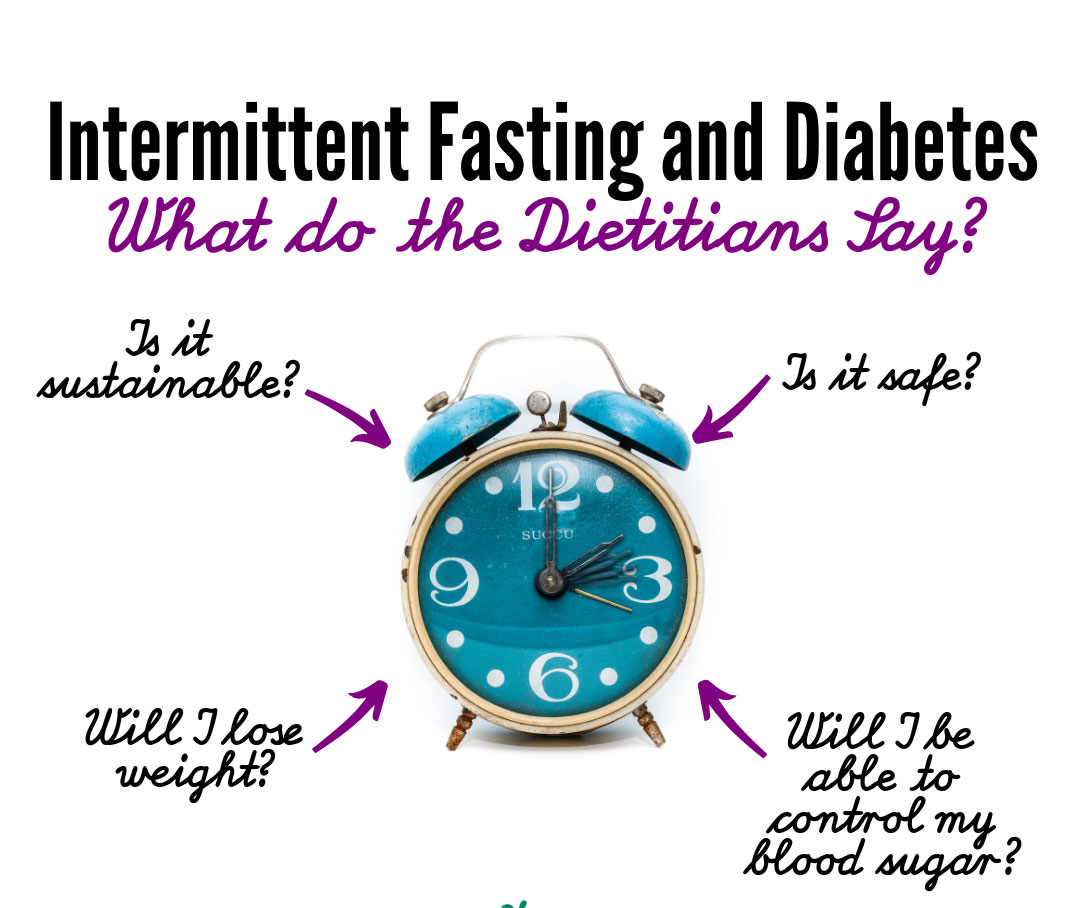Diabetes has been mentioned in passing throughout this blog, but in terms of weight loss and intermittent fasting, it merits a closer examination. Diabetes patients must pay close attention to what they eat. This calls for even greater caution when it comes to fasting. While many people believe that intermittent fasting is beneficial for persons with diabetes, a large number of people also disagree and support the practice.
Although it may seem like an obvious benefit for those who have diabetes, we need to educate ourselves on the symptoms of the condition and how it affects our bodies. We have seen that intermittent fasting helps regulate organ functions. Let’s examine the fundamentals of diabetes and then use them to inform our chosen diets and fasting.
Basics of Diabetes
Whether or not a person is aware they have diabetes, the symptoms might be mild and gradually worsen over time. Many individuals with prediabetes or borderline diabetes have acute diabetic symptoms without even being aware of it. A frequent condition characterized by elevated blood sugar levels is diabetes. We require the sugars that come from food to produce energy. These sugars are aided in entering the cells of the body by insulin. You can have diabetes if your body is having difficulties making insulin. Blood-sugar ratios can become out of balance if insulin isn’t working properly to control the sugars, which can lead to symptoms similar to diabetes.
Along with prediabetes, which typically progresses to full-blown diabetes in later years, there are two forms of diabetes. Let’s talk about the minute variations between these categories.
A kind of diabetes
As opposed to its sibling, this form of diabetes is less prevalent. If you have type 1 diabetes, your body does not make any insulin at all. To help control blood sugar levels in this situation, insulin shots are necessary.
Diabetes Type 2
Type 2 Diabetes, which is more prevalent, is defined by your body producing insufficient quantities of insulin or failing to effectively use the insulin that is generated.
Prediabetes
You might have prediabetes if your blood sugar levels are above average but not high enough to be classified as diabetic. As it increases your risk of developing Type 2 diabetes in the future, this needs to be watched carefully.
Diabetes can be confirmed with blood tests. Despite the fact that diabetes is a serious illness, many people with it have happy lives. Exercise and specialized diets help us manage our diabetic symptoms. Keeping an eye on your blood sugar levels is another typical approach. Although many people have the misconception that people with diabetes must take insulin shots, for Type 2 patients, this is not typically the initial step in care. Taking prescription medications and changing one’s diet and lifestyle to healthier ones can also help manage the symptoms of diabetes. Let’s consider what the perfect diet for managing diabetes would be in light of this.
Diet for Diabetes
Dietary modifications are a typical strategy for treating diabetes symptoms. If someone is diagnosed with prediabetes, it is frequently the first action to take. As we’ve previously stated, even small modifications to meal patterns can have a significant impact on how well organs perform. This includes the pancreas, where the process of producing insulin starts. Naturally, dietary changes and how one feels about eating are good strategies to control and regulate blood sugar levels. It’s essential to evaluate your diet and make the appropriate adjustments if you want to naturally control your blood sugar levels.
Diets made expressly to treat diabetes symptoms are straightforward; we only need to eat a balanced diet in moderation and follow a set schedule for meals. This includes avoiding eating in the middle of the night, when our digestive systems like to rest, and eating consistently at convenient times of the day. We need nutrient-dense, unprocessed foods, just like any healthy diet. The best options include dishes with few calories and low-fat ingredients. Fresh fruits, vegetables, whole grains, and legumes are prioritized in the diet. Dairy ingredients with low fat content are also acceptable, but many consumers do not include these items.
A balanced diet for everyone is the best diet for diabetes. It’s as easy as maintaining a healthy diet and avoiding sugary foods, particularly soda and candy. Such diets are essential for shedding weight as well. According to studies, losing weight can help manage diabetic symptoms and make it much simpler to monitor and manage blood sugar levels.
Dietary Guidelines for Diabetes
We must be extremely careful and detail-oriented while creating a plan to change your diet to help regulate blood sugar levels. Many people with diabetes symptoms are directed to a dietitian for assistance in creating and starting a new dietary plan. A general description of a diabetes diet plan’s implementation is provided below.
Diabetes diets provide for three regularly spaced, moderately sized meals each day. Breakfast, lunch, and dinner are the best times to eat. We need to make the portions of these small to medium-sized meals count by selecting nutrient-dense components and satisfying foods like whole grains and healthy fats. A nice variety of meals should be included in each balanced meal. This is how the diabetes diet shopping list would seem;
– Nutritious carbohydrates from whole grains, legumes, fruits, and vegetables. Steer clear of processed foods that have extra sugars and fats.
– Fish, including salmon and tuna. Steer clear of mercury-rich fish.
– Foods high in fiber, such as fruits, nuts, and vegetables.
– Good fats from nuts, olive oil, and avocados.
On a diabetes diet, there are some foods that must be avoided. You should fully avoid foods that are known to raise your risk of heart disease or stiffen your arteries. These meals include:
– Saturated fats, which can be found in processed foods, beef, butter, and margarine.
– Dairy contains “bad” cholesterol.
Take note that these recommendations are only useful if diabetes has already developed. These foods are actually beneficial for us when ingested in specific amounts and ways (margarine is an exception because it contains hydrogenated fats, which are ALWAYS bad for you).
The likelihood that an ingredient contains these harmful chemicals decreases with processing level. Additionally, it is advised that followers of this diet consume no more than 2,500 mg of sodium daily. For specific information on this amount as it applies to you, speak with your doctor. This figure varies widely from person to person.
The major goal when creating meal plans specifically for diabetes is to include more veggies. However, dark carbohydrates and lean sources of protein are needed to counteract the components’ vibrant colors and nutrient density. As a general rule, this is the best;
– Vegetables like carrots, kale, or tomatoes should make up half or more of your serving.
– Lean proteins, such as those found in fish or chicken, should make up one-fourth of your serving.
– Whole grains like brown rice or quinoa should make up an eighth of your serving.
– Starchy vegetables like peas or potatoes should make up one-eighth of your portion.
– For quick snacks in between meals, pick one serving of fruit or a serving of healthy fats like avocado.
– Choose unsweetened beverages and drink lots of water. Fruit juices should be avoided because they contain a lot of sugar. Naturally, unsweetened coffee and tea are fantastic in between meals.
This overall outline is ideal for a diabetes diet, and given how severe the condition is, it should be followed to the letter. Additionally, there are additional facets of this way of life that require special consideration.
Carbohydrates
Carbohydrates are the primary source of glucose, which is the sugar we use as fuel. Our body uses carbohydrates to break down and turn into glucose for fast energy. As a result, carbs have the biggest impact on blood sugar levels. To assist balance out their blood sugar levels, diabetics must constantly monitor their carbohydrate intake, and if they use insulin, they must modify the dosage as necessary.
Many diabetics educate themselves about how to effectively read food labels and keep track of their carbohydrate intake with the aid of a dietician. This minor annoyance is essential to the diabetic diet. When changing your insulin dosage, always talk to your doctor or a dietitian first.
Glucose index
The glycemic index is used by some people to assess and select foods, particularly carbs. This index is a system for ranking different foods based on how they affect blood sugar levels. A scale of 1-100 is used to measure the glycemic index. The three primary GI classifications are as follows: Low, Moderate, and High. These classifications are rather self-explanatory. A low glycemic index is one with a score of 55 or less, a moderate index is one with a score of 56 to 69, and a high index is one with a score of 70 or more. Lower indexed carbohydrates are digested more slowly, resulting in a slower rise in blood sugar levels and, in turn, a slower rise in insulin levels. Higher indexed carbohydrates metabolize more quickly and stimulate the production of more insulin, making them harder to control.
The glycemic index of a typical American days’ worth of meals is 50â60. It is safe to infer that a significantly lower GI, about 45 for the entire day, is optimum for those with diabetes. If one decides to be particularly careful with their carb intake, this figure may even be lower. According to studies, the lowest glycemic indexes are often between 40 and 45. A lower risk of heart disease and a lower risk of developing diabetes are only two of the many health advantages associated with these low indices.
A menu plan
As we can see, this diet is incredibly all-inclusive and straightforward, making it useful for people with or without diabetes. An ideal diet plan for every person includes a balance of nutrient-dense meals, little sugar intake, and control over carbohydrate intake. For more information, let’s take a closer look at a typical illustration of a full day of meals for a diabetic who needs 1,300 to 1,700 calories daily.
Breakfast
– One piece of whole-wheat bread
– Only sometimes use jam or jelly
– Oatmeal in a cup with fruit or berries.
– Decaffeinated coffee
Lunch
– A chicken sandwich with lettuce, tomato, and cheese on whole-wheat bread.
– A single fruit, such as an apple or orange
– Vegetable or mineral water
Dinner
– Salmon or tuna that has been seared in olive oil
– Steamed or mashed potatoes
– Vegetables that have been steamed, such carrots or peas
– A whole grain cookie or roll
Snacks
– A little yogurt with less fat, popcorn, or trail mix.
The meal plan mentioned above is a good one for a diabetic diet. It contains items that won’t adversely boost blood sugar levels and is balanced and colorful. Always listen to your body, discover similar foods you like, and consult a dietician or your doctor before modifying your meal plan if you have diabetes.
Fasting and Diabetes
We are knowledgeable with the causes and signs of diabetes. We can see that science is very straightforward for such a prevalent and serious illness. However, how does intermittent fasting factor in? Since IF is the focus of this blog, how might fasting have an impact on diabetes symptoms? Is intermittent fasting safe to use, and what’s the distinction between Type 1 and Type 2 diabetes? Let’s look more closely at the connection between intermittent fasting (IF) and diabetes and how it can benefit someone with the disease.
It has been demonstrated that intermittent fasting and diabetes symptoms are somewhat directly related. Fasting has been shown to support healthy organ function, which may help prevent the onset of diabetes. Insulin is produced by the pancreas and aids in controlling the body’s blood sugar levels. We see that the pancreas is given time to rest and heal on days of calorie restriction when following an intermittent fasting regimen. Fasting is thought to help the body’s natural processes to better create and use insulin because diabetes is caused by insufficient or inefficient insulin production. But before drawing any judgments, we should look at some study and specifics.
Diabetes and Fasting: Justifications
So why would someone with such a difficult illness even think about fasting? There are many benefits to intermittent fasting for those with diabetes. Much though it might seem that adding a fasting practice to a diabetic diet would make things much more difficult, there may be advantages to the practice as well. Let’s look at some of the primary reasons why someone might think about incorporating IF into their diet.
Religious – As was already noted in the book, many people are required to fast during specific periods of the year due to their religious responsibilities. Diabetes may cause an issue with this. Ancient literature have no instructions on how to navigate a fasting month if you have diabetes. There are instances where religious authorities advise their followers to refrain from fasting and instead channel their religious ardour through other channels. However, a lot of ardent followers discover that they don’t want to cut corners with their passion and loyalty. For diabetes people who want to follow religious dogma and practice, this is problematic.
Intermittent fasting is frequently used by people to rid their bodies of toxins that have accumulated over many years. In recent years, the practice of cleansing has gained popularity, and many people have posted online about their positive results. But is this safe for people who have diabetes? Cleansing may seem like a wise move for someone with prediabetes who feels the need to take action to prevent their condition from becoming out of control. However, as we learned above, diabetics want dependable structure and reliable routines to get the most out of their diet. A cleanse may lead your routine to become unbalanced, which is dangerous for diabetics.
Surgery – Prior to surgery and other medical operations, fasting is frequently required. For those who have diabetes, this could be a concern. Inconsistent hormone release may also be a result of the stress experienced before surgery. If you have to fast before a procedure, be very careful to manage your stress levels and keep your blood sugar levels under control. While Type 2 patients can better control the insulin with shots, Type 1 patients will struggle to manage irregular release during this time. Inquire with them about the best strategy for fasting before these treatments if there is surgery on the horizon. Fortunately, you are more than likely in contact with numerous medical specialists.
Weight loss – Obesity and weight gain are common problems for people with diabetes. Since weight gain is a serious worry for those who have been diagnosed with the disease, intermittent fasting has proven to be a secure and efficient technique to shed pounds swiftly. It is advised to aim for progressive weight loss. It will be simpler to manage losing the excess weight gradually over time than it will be to do it rapidly through severe fasting.
There are various reasons why a person with diabetes might want to try an intermittent fasting schedule, but let’s get to the crux of the matter: Is intermittent fasting generally safe for diabetics? The answer to this query is debatable. We must take into account the significant variations among the various forms of diabetes as well as the findings of recent medical studies on the subject.
A long-running discussion about intermittent fasting’s safety has recently become more heated. Most people recently decided that fasting was not advantageous enough to justify the risks associated. This attitude has changed in recent years as research has demonstrated the enormous potential of intermittent fasting to support our bodies’ innate healing processes. There haven’t been many studies especially focusing on diabetes patients, but those that have showed higher insulin sensitivity in diabetic patients when tested on humans.
Although further research is undoubtedly needed, the evidence indicates that intermittent fasting has a direct impact on blood sugar levels in diabetic patients. This might be advantageous or detrimental. Consistency is key when it comes to diabetes diets. If fasting disrupts the habits of food consumption, it could be harder to keep an eye on blood sugar levels. Maintaining stable blood glucose levels will be particularly challenging when full meals are skipped. Not to mention how complicated a fasting diet becomes. This can be challenging to keep up over an extended length of time, and the diabetes diet is already complicated, increasing the risk of making a costly error.
We can see that the risk of combining an intermittent fasting schedule with a diabetic lifestyle is increased by the dearth of reliable studies on diabetes patients, irregular meal patterns, and complex diet structure. What does this mean for a person with diabetes, though?
As we draw to a close, it is crucial to stress the value of consulting your doctor or dietician when thinking about making such significant dietary changes. But based on what we’ve learned from researching diabetic diets and intermittent fasting, we can declare that further research is required before we can recommend that anyone undertake diabetic fasting. One will be significantly safer than someone with Type 2 diabetes if they have been identified with prediabetes or diabetic symptoms. Although the patient with prediabetes will still need to regularly monitor the symptoms, intermittent fasting can assist them combat the harmful effects. The biggest issue is the sharp drop in blood sugar that comes with intermittent fasting. The diabetic diet necessitates long-term, stable routines. When choosing a fasting approach while experiencing diabetes symptoms, it may be preferable to take calorie-restricted days into account rather than zero-calorie days.
It seems that the lack of knowledge and study makes it a difficult decision for diabetes patients who are considering a fasting routine given the risk of ketoacidosis or hypoglycemia. Intermittent fasting is a tempting choice for people looking for a natural cure for their symptoms despite the considerable hazards involved. The most important thing is your safety, above all other desires. Do not skimp on thoughtful consideration and inquiry into the issues at hand in favor of getting outcomes quickly. Never forget to listen to your body and always seek medical advice. Find what suits you the best, then stay with it.








